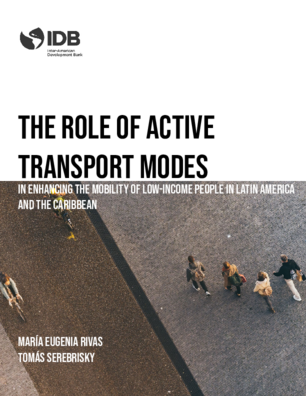The Role of Active Transport Modes in Enhancing the Mobility of Low-Income People in Latin America and the Caribbean
Date
Apr 2021
Active transport modes play a key role in developing sustainable transport systems by making cities accessible, safe, inclusive, and green. In Latin America and the Caribbean, walking and cycling represent a large share of total trips, especially for low-income groups. But for them, the decision to travel by using active transport modes, especially walking, is not based on sustainability but affordability. Income disparities in the region are also reflected in pedestrian and cycling infrastructure, with poor neighborhoods lacking infrastructure of sufficient quality or size. Despite some successful experiences in the region, there is a lack of integration between transport modes, particularly public transport and cycling, which is crucial for improving the accessibility of low-income people, who usually live in peripheral areas, face long commutes, and require connecting infrastructure and services. The region has the opportunity to improve low-income groups access to livelihood opportunities and key services by developing infrastructure supporting nonmotorized transport, increasing citizen participation in planning, improving planning and regulation, and integrating active transport modes in urban transport systems, especially public transport.




